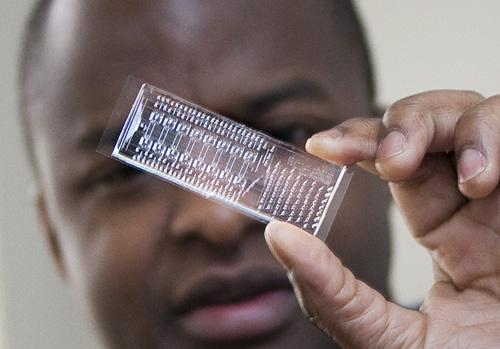The continued expansion of the pharmaceutical and biotechnology industry in North America, coupled with increasing incidents of cancer, HIV, and Alzheimer’s disease around the globe, has resulted in the growing need for more technologically advanced cell sorting techniques for microbial and disease identification. This need for better clinical diagnostic tools is even more apparent with the increasing threat of antibiotic resistant bacteria. However, high instrument cost coupled with an overall lack of technical knowledge and awareness regarding cell sorting continues to hamper the growth of this market.
Despite these largely avoidable setbacks, advancements in microfluidic systems have given researchers the ability to work with compartmentalized, droplet sized sample volumes. Using droplets not only cuts the cost of reagents but also gives researchers the ability to better maintain and control the cells within the sample as well as provide quantitative information. This allows for more reliable and cost-effective separation and sorting processes. However, one of the issues with droplets sorting in these systems is the lack of a method that can automatically sort out droplets whose fluidic properties change based on the chemical reactions The following technology describes a method of enhancing a microfluidic detector’s limits and sensitivity by sorting microdroplet samples based on stiffness and viscosity.
Researchers at LLNL have developed a method to passively sort individual microdroplet samples of uniform size based on stiffness and viscosity. Unlike electrical or optical methods for droplet sorting, this apparatus does not require a measurement step. Instead, particle separation occurs through changes in shearing forces determined by the stiffness of the particles in the microdroplet sample and controlled by the particle’s flow rate. Forks diverge from the devices’ main flow channels into two separate flow channels. This method eliminates the expense, complexity, lower throughput, and reliability issues associated with previous sorting techniques. The figure shows that droplets with κ-values between 0.5–10 (yellow) migrate toward high shear gradients at the edge, while all others (blue) migrate toward low shear gradients at the center.
- Passive sorting of droplets based on stiffness and viscosity and does not require a measurement step
- Low cost
- Less complexity
- Higher throughput
- Higher reliability
- Genetic screenings for drug discovery
- Genome sequencing
- Food & beverage safety testing
- Biomedical diagnostics
- Forensics analysis
- Identifying and tracking infectious diseases
- Flow cytometry
- PCR processes
- Single-cell sequencing


